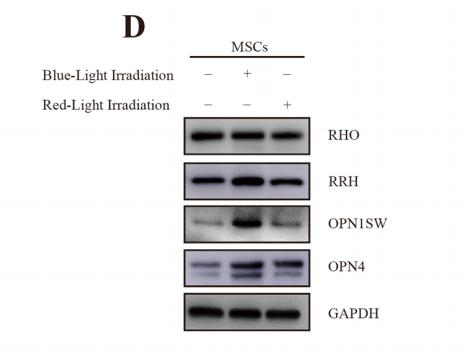RHO Antibody - #DF5046
製品説明
*The optimal dilutions should be determined by the end user.
*Tips:
WB: For western blot detection of denatured protein samples. IHC: For immunohistochemical detection of paraffin sections (IHC-p) or frozen sections (IHC-f) of tissue samples. IF/ICC: For immunofluorescence detection of cell samples. ELISA(peptide): For ELISA detection of antigenic peptide.
引用形式: Affinity Biosciences Cat# DF5046, RRID:AB_2837405.
折りたたみ/展開
CSNBAD1; MGC138309; MGC138311; OPN 2; OPN2; opsd; OPSD_HUMAN; opsin 2; Opsin 2 rod pigment; Opsin-2; Opsin2; Retinitis Pigmentosa 4; Retinitis pigmentosa 4 autosomal dominant; RHO; Rhodopsin; RP 4; RP4;
免疫原
A synthesized peptide derived from human RHO, corresponding to a region within C-terminal amino acids.
- P08100 OPSD_HUMAN:
- Protein BLAST With
- NCBI/
- ExPASy/
- Uniprot
MNGTEGPNFYVPFSNATGVVRSPFEYPQYYLAEPWQFSMLAAYMFLLIVLGFPINFLTLYVTVQHKKLRTPLNYILLNLAVADLFMVLGGFTSTLYTSLHGYFVFGPTGCNLEGFFATLGGEIALWSLVVLAIERYVVVCKPMSNFRFGENHAIMGVAFTWVMALACAAPPLAGWSRYIPEGLQCSCGIDYYTLKPEVNNESFVIYMFVVHFTIPMIIIFFCYGQLVFTVKEAAAQQQESATTQKAEKEVTRMVIIMVIAFLICWVPYASVAFYIFTHQGSNFGPIFMTIPAFFAKSAAIYNPVIYIMMNKQFRNCMLTTICCGKNPLGDDEASATVSKTETSQVAPA
種類予測
Score>80(red) has high confidence and is suggested to be used for WB detection. *The prediction model is mainly based on the alignment of immunogen sequences, the results are for reference only, not as the basis of quality assurance.
High(score>80) Medium(80>score>50) Low(score<50) No confidence
研究背景
Photoreceptor required for image-forming vision at low light intensity. Required for photoreceptor cell viability after birth. Light-induced isomerization of the chromophore 11-cis-retinal to all-trans-retinal triggers a conformational change that activates signaling via G-proteins. Subsequent receptor phosphorylation mediates displacement of the bound G-protein alpha subunit by the arrestin SAG and terminates signaling.
Phosphorylated on some or all of the serine and threonine residues present in the C-terminal region (By similarity). After activation by light, phosphorylated by GRK1 (in vitro).
Contains one covalently linked retinal chromophore. Upon light absorption, the covalently bound 11-cis-retinal is converted to all-trans-retinal. After hydrolysis of the Schiff base and release of the covalently bound all-trans-retinal, active rhodopsin is regenerated by binding of a fresh molecule of 11-cis-retinal.
Membrane>Multi-pass membrane protein. Cell projection>Cilium>Photoreceptor outer segment.
Note: Synthesized in the inner segment (IS) of rod photoreceptor cells before vectorial transport to disk membranes in the rod outer segment (OS) photosensory cilia.
Rod shaped photoreceptor cells which mediate vision in dim light.
Belongs to the G-protein coupled receptor 1 family. Opsin subfamily.
研究領域
· Organismal Systems > Sensory system > Phototransduction.
参考文献
Application: WB Species: human Sample: HUVEC cells
Application: WB Species: Human Sample: mesenchymal stem cells
Restrictive clause
Affinity Biosciences tests all products strictly. Citations are provided as a resource for additional applications that have not been validated by Affinity Biosciences. Please choose the appropriate format for each application and consult Materials and Methods sections for additional details about the use of any product in these publications.
For Research Use Only.
Not for use in diagnostic or therapeutic procedures. Not for resale. Not for distribution without written consent. Affinity Biosciences will not be held responsible for patent infringement or other violations that may occur with the use of our products. Affinity Biosciences, Affinity Biosciences Logo and all other trademarks are the property of Affinity Biosciences LTD.






